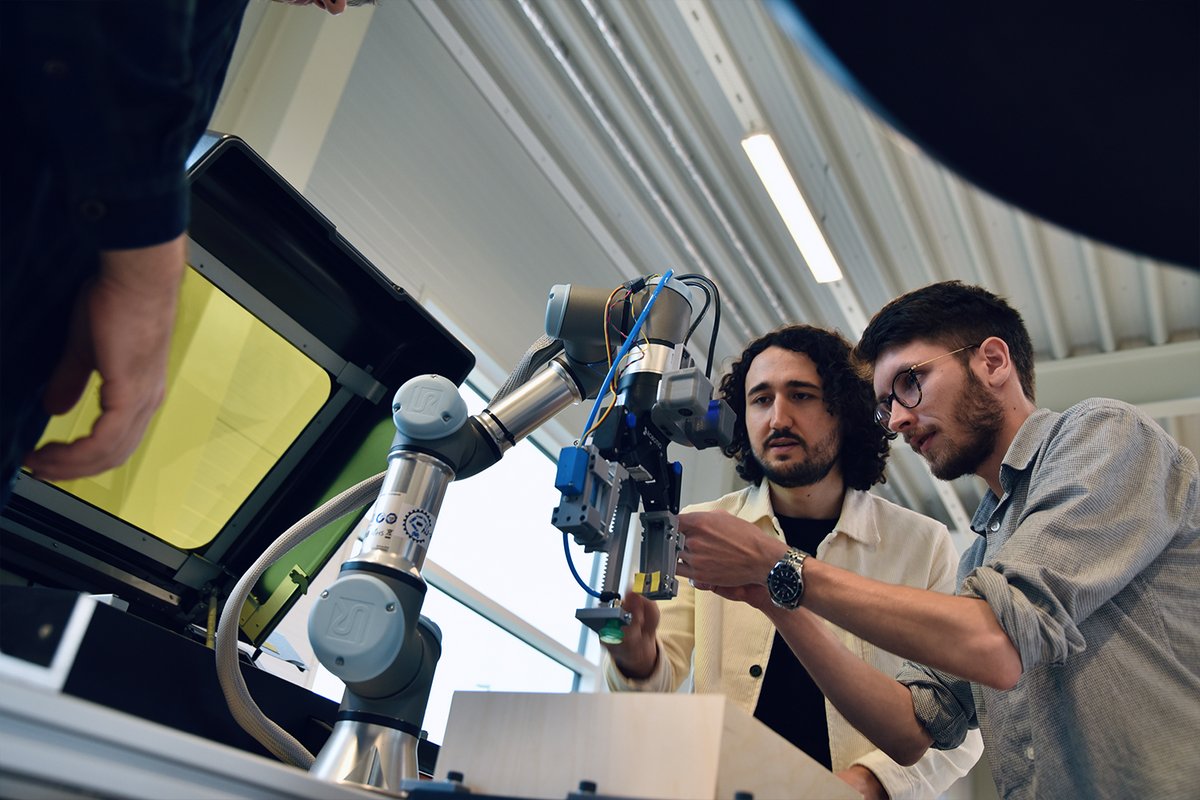
NIZE equipment supplies large-scale graphics machinery throughout Scandinavia, and the company has won an award for the speed of its growth. In collaboration with engineering researchers at Aarhus University, the company has initiated development of collaborative robot technology for the graphics industry.
The project is part of Smart Industry, an Industry 4.0 development programme funded by the EU Regional Development Fund to help small and medium-sized Danish companies to embrace robot technology, digitalisation and automation.
“There’s ever greater demand for machines that can increase efficiency and automate repetitive processes by using robot technology. But unfortunately, there’s no plug-and-play, off-the-shelf products to help a company get started on the transition. So what’s the answer? Where do you go?” asks Lars Nikolajsen, CEO and founder of NIZE equipment.
He asked himself the same questions back in 2013, when he was losing customers to another supplier because of automation. Finding no answers he could use, he tried himself to develop robot technology that could be integrated into the company’s existing printer systems.
“Having robots in production is a huge advantage. For example, you can keep production running outside normal opening hours, or let the robot take over work for an employee who is more useful elsewhere in the production chain. As a supplier, I had to familiarise myself with what robot technology can do, and its strengths and advantages, because that’s the future,” he says.
In 2019, NIZE equipment joined the Smart Industry project, and since then, engineering students and researchers from AU Engineering have worked with the company’s technicians to develop and fine tune collaborative robots that can work with humans on existing printing systems.
“A lot of different small and medium-sized enterprises (SMEs) produce many different products and have dynamic production layouts, so it’s very difficult to develop a robotic system with a commercial grabbing device that can handle the multitude of different products. This is one of the reasons why integrating robotic technology into production chains is still a complex task,” says Associate Professor Xuping Zhang, an expert in collaborative robots at the Department of Mechanical and Production Engineering at Aarhus University, who is in charge of the project.
He continues:
“Many Danish SMEs have yet to join the robot wave, even though the same companies are increasingly worried about losing their competitive edge to foreign companies. But fortunately, it’s actually quite easy to set up a collaboration with us,” he says.
For Lars Nikolajsen, the collaboration with Aarhus University has been a great success. The collaborative robot system has not yet been fully developed, but the company has gained valuable insight into what is needed to make the technology work, and they can now begin to see a product take shape.
“There’s still some way to go before we have a finished product for commercialisation, but we’ve identified a lot of technical aspects of automation that we can take further. We’d never have got here without our collaboration with the university, because we simply can’t afford to hire a group of software engineers to develop something like this,” he says.
The Smart Industry development programme was completed in 2021, but both the researchers and the company hope to continue their collaboration.
“Our customers are increasingly asking for automation, and this applies for many sectors. We need much greater focus on digitalisation and robot technology if we in the small Scandinavian countries are to survive in the future. So, I hope that we’ll be able to continue our collaboration and develop more of the technology society is looking for,” says Lars Nikolajsen.

NIZE equipment ApS is a medium-sized mid-Jutland company located in the town of Odder. The company has 17 employees and is active in Denmark, Norway, Sweden and Finland.
The company was founded by Lars Nikolajsen in 2008, and in 2013 the company began to develop robot technology for one of its printing systems. The project attracted the supplier, who took it on and is now offering a complete robot-assisted system.
In collaboration with the Robotics research team led by Associate Professor Xuping Zhang at the Department of Mechanical and Production Engineering at Aarhus University, NIZE equipment started a project in the Smart Industry framework in 2019 to develop a more intelligent robot system that can perform quality control, take over manual tasks and clean products.
Smart Industry is an Industry 4.0 development programme run by the Central Denmark Region with focus on innovation-collaboration and knowledge sharing, whereby researchers from the university share knowledge with companies in order to optimise processes and incorporate new technology. Companies in the project only invest in the working hours spent on the programme, which is being funded by the EU Regional Development Fund and the Central Denmark Region.